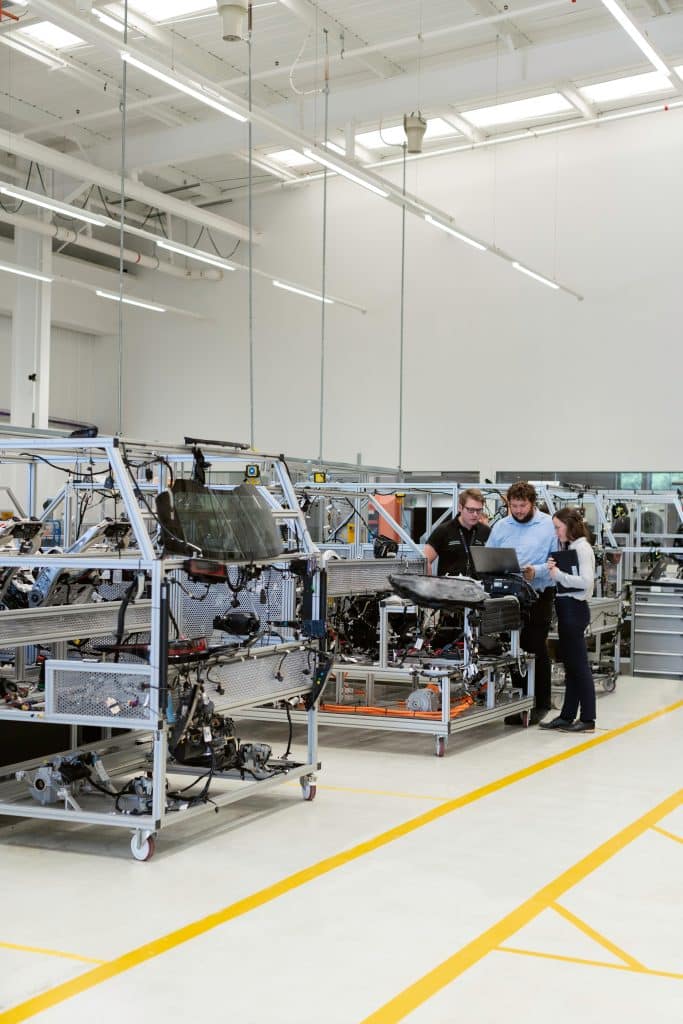An optical encoder is a device that uses light (and sometimes sound) to track motion in one or more dimensions. In order to measure position accurately, the sensing part of an optical encoder must be located at the endpoint that it’s measuring movement from (this could be on a motor shaft, for example). Optical encoders are used in many different applications — industrial automation, robotics, automotive electronics, and consumer electronics — as well as instrumentation requiring rotary or linear measurement.
A simple disc-shaped optical encoder consists of a light (LED) source, a photodetector, and an opaque disc with features that interrupt the light path. The disc also contains an object to break up any light that reaches the photodetector directly from the LED instead of through the holes in the disc. This eliminates measurement errors caused by variations in incoming light intensity or beam direction that would otherwise be present if no object was present in front of the detector.
What is an optical encoder used for?
As a simple device, an optical encoder lets you measure the position (e.g., rotation) with great accuracy — as long as it can be moved without moving the ground on which it is mounted. (In industrial automation, for example, you may want to move your motor shaft without moving the machine that it’s attached to.)
A simple disc-shaped optical encoder consists of a light (LED) source, a photodetector, and an opaque disc with features that interrupt the light path. The disc also contains an object to break up any light that reaches the photodetector directly from the LED instead of through the holes in the disc. This eliminates measurement errors caused by variations in incoming light intensity or beam direction that would otherwise be present if no object was present in front of the detector.

The most common use of optical encoders is as rotary position detectors. This can include counting revolutions on a shaft (useful for accurately measuring machine vibration and tachometers) or tracking linear movement (useful for machine tooling, robotic arms, production lines, and automotive safety systems). Optical encoder systems are also used to detect door contacts, guide light curtains, and measure position on some computer screens.
For example, an automotive electronic throttle system uses an optical encoder to determine the throttle position — a critical measurement for fuel injection accuracy.
Applications for Optical Encoders
Many automotive electronics systems use optical encoders for the throttle position sensor.
An optical encoder can be used to measure rotary or linear movement, and it can be mounted on a rotating or linear shaft that has been accurately positioned with a servomotor. Optical encoders are also used to measure position on computer screens — although in this case, the screen may use two sensors that measure the distance between them using an acute angle rather than just the distance between the screen and its user.
In some cases, an optical encoder is located at a fixed location, whereas in other cases, it is attached along with its associated device to a moving part (e.g., a motor shaft or random orbit sander table).
Optical encoders and their application to automotive electronics
The general design of an optical encoder is as follows:
The encoder features a light source (e.g., a red LED), an opaque disc, a photodetector (e.g., photodiode), and an object that breaks up the light path. The disc may also have holes cut into it to direct some of the light straights to the photodetector. These holes can be used in optical encoder systems for two purposes:
- to direct light into the disc and
- to break up light that has entered through the disc’s holes rather than passing through them straight on.
The disc’s holes can also be used to measure the light that does enter through the disc, which helps eliminate errors caused by variations in incoming light intensity or direction.

The object that interrupts the light path is typically a ball bearing, but other materials (e.g., a spherical plastic bead) may be used instead. The simplest type of optical encoder design consists of an opaque disc (with no holes) and some sort of object placed in front of the photodetector (i.e., a transparent material).
How do optical encoders work?
The optical part of the system uses light to detect the position in one or more dimensions. For example, it can detect rotation by using only two light sources for two detectors.
The rotating encoder disc is illuminated by two infrared LEDs behind it. The first LED produces light that falls on the first detector, which is a photodiode (e.g., a phototransistor). The second LED also produces infrared light that passes through the open holes of the disk and strikes the second detector, which is a photomultiplier tube (PMT) or transistor.
This basic encoder design is used for many applications (particularly in measuring machine vibration and tachometers) where the resolution of the encoder system is not critical.
The two detectors can be used to measure how far the light has traveled using a phase shift circuit or an amplitude difference measurement circuit that works out the distance from the two detectors. This type of optical encoder design does not allow for very high resolution, which limits its usefulness in some cases.
However, it’s one of the most common designs for simple rotary position detectors because it’s inexpensive and easy to work with. The disc’s holes also help to eliminate errors caused by variations in incoming light intensity or beam direction.
Another type of optical encoder uses a separate light source (e.g., an infrared LED), a photodiode, and two holes that allow the light to enter through the disc and then bounce back through the holes and strike a photomultiplier tube (PMT) or transistor. This arrangement is used for even higher accuracy than the basic design, allowing for measurements in submillimeter ranges when used with a high-resolution detector and/or an aperture stop (also known as an expansion lens).
Compared to optical encoders, electrical encoders are more expensive, but they can offer greater resolution (e.g., a resolution of 0.0001 or 0.001 degrees per pulse). Electrical encoders can also be used with systems that don’t use an analog-to-digital converter to process the encoder’s output — although analog-to-digital converters are often used in practical applications (e.g., automotive applications).












Leave a Reply